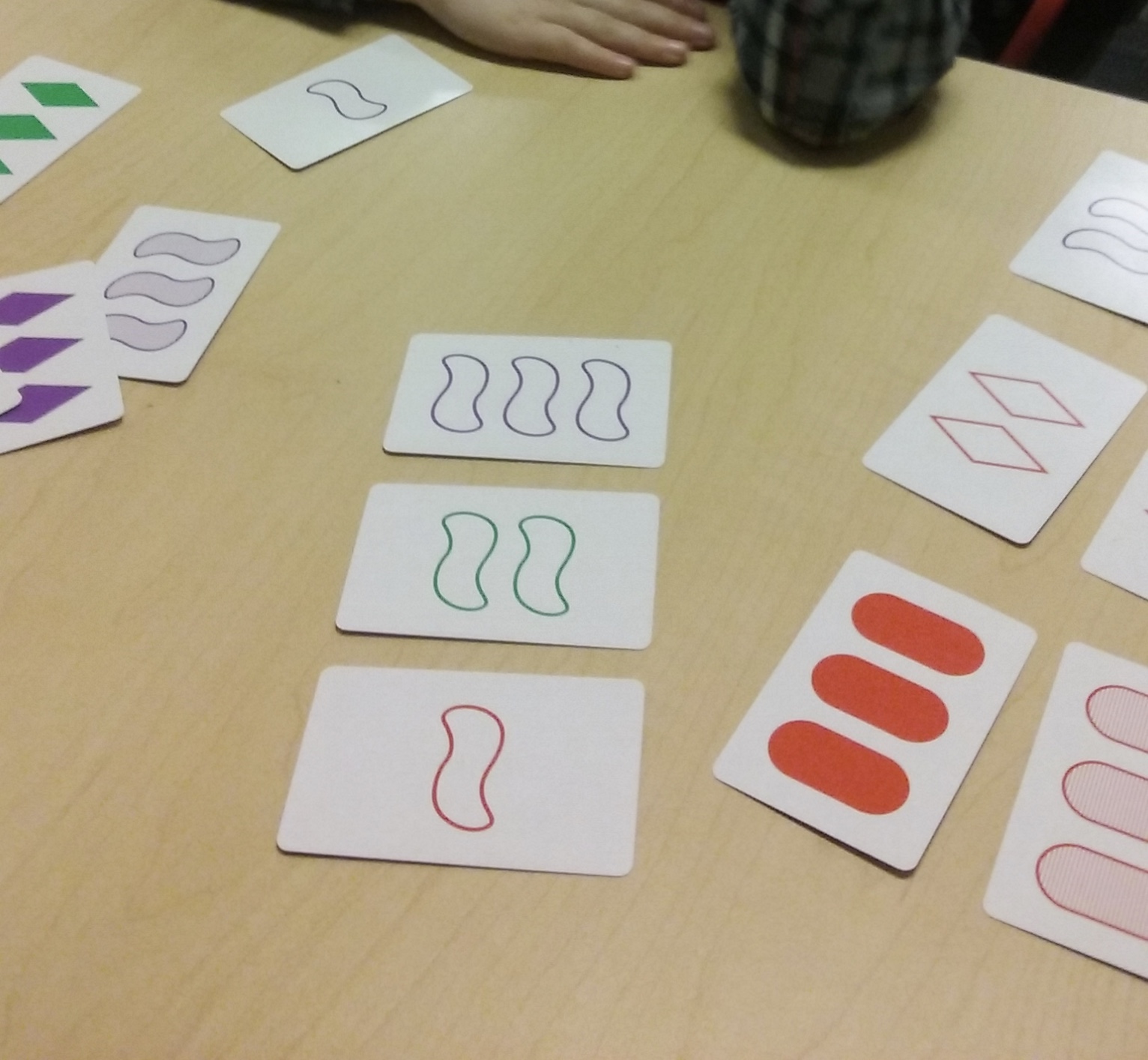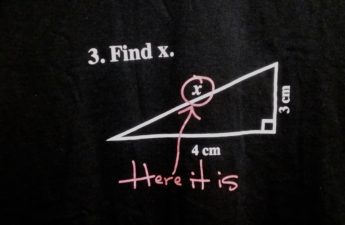Last week my class participated in Global School Play Day. I was a bit nervous about an entire day of “unstructured” play with my high energy crowd, but I stepped through my fears and let it happened. It wasn’t completely unstructured, I guess. Our day is kind of broken up into manageable chucks with the placement of specials, lunch, and recess in our schedule, so during each chunk of time I set out several activities that we don’t normally have on a daily basis. I also had a list of possibilities on the board in case a student wasn’t interested in what was available. I let them choose what to do and freely move from activity to activity as they wanted, as long as they cleaned up one thing before moving on to another.
I decided to take the opportunity to teach my kiddos some of my favorite games. SET happens to be at the top of that list. Do you know it?
SET is a visual perception card game in which players race to identify and collect sets of three cards that fit certain criteria. It’s kind of complicated, yet the concept is simple. Cards have four separate attributes.
- Shape – Oval, Diamond, Squiggle
- Color – Purple, Green, Red
- Fill – Empty, Striped, Solid
- Number – One, Two, Three
A SET is three cards that either all share a particular attribute or all don’t share it. Each characteristic is treated separately, but a SET must meet the requirements for all four attributes. Sounds confusing, but let me explain using these 12 cards.

These three cards form a SET because each attribute is as follows:

- Shape – All are diamonds
- Color – All are different
- Fill – All are solid
- Number – All are different
These three cards also form a SET.

- Shape – All are different
- Color – All are different
- Fill – All are different
- Number – All are the same
Here is another set from the daily game above.

- Shape – All are different
- Color – All are Green
- Fill – All are different
- Number – All are different
If any two cards share a particular characteristic not found on the third, the cards do not make a SET.
There are three more SETS in this example. Can you find them?
Check here to see if you are right!
When I was teaching this game to my littles, I found it easier to have a player choose two cards and then describe the third card that would complete the SET. We then searched the deck for the card and checked each attribute to make sure it really was a SET. Once students got comfortable making correct SETs, I then taught them to play the game by dealing out the 12 cards. Instead of speed, we took turns finding a SET and replacing used cards with cards from the deck. Once everyone was comfortable with this format, I introduced the speed factor.
Reasons why I love this game for first graders:
- Students use and develop visual discrimination skills.
- By asking them to describe the third card that will complete the SET, students are using language to reinforce their ideas.
- It encourages the use of complex critical thinking skills in a game format.
- Students are developing grouping and sorting skills by finding similarities and differences.
- Introducing the speed aspect when students really understand the concept of what makes a SET takes these skills to a different level and engages those students who like competition.
- The online game of the day makes it an easy, no prep start up or time filler. You don’t have to own the game to play.
- It’s fun!
Not surprisingly, these are also the reasons I love this game for students of any age!
Have you played SET before? Have you used it with your students? I’d love to hear your thoughts and ideas!



